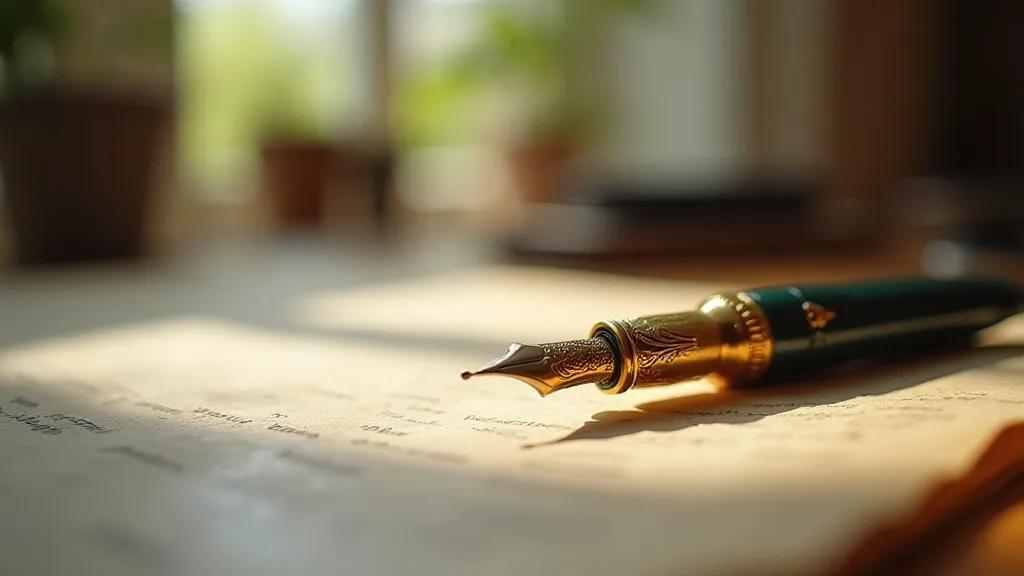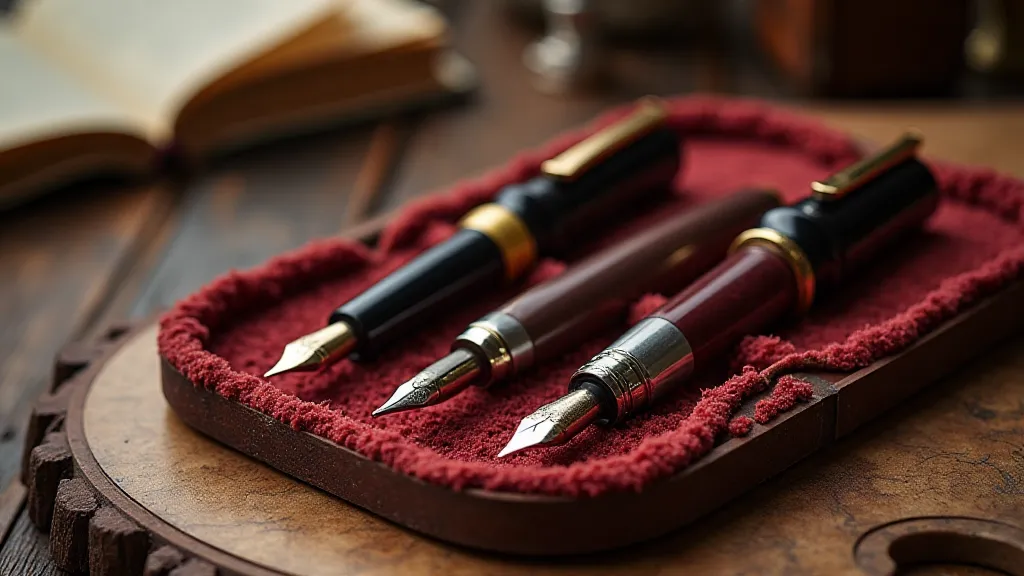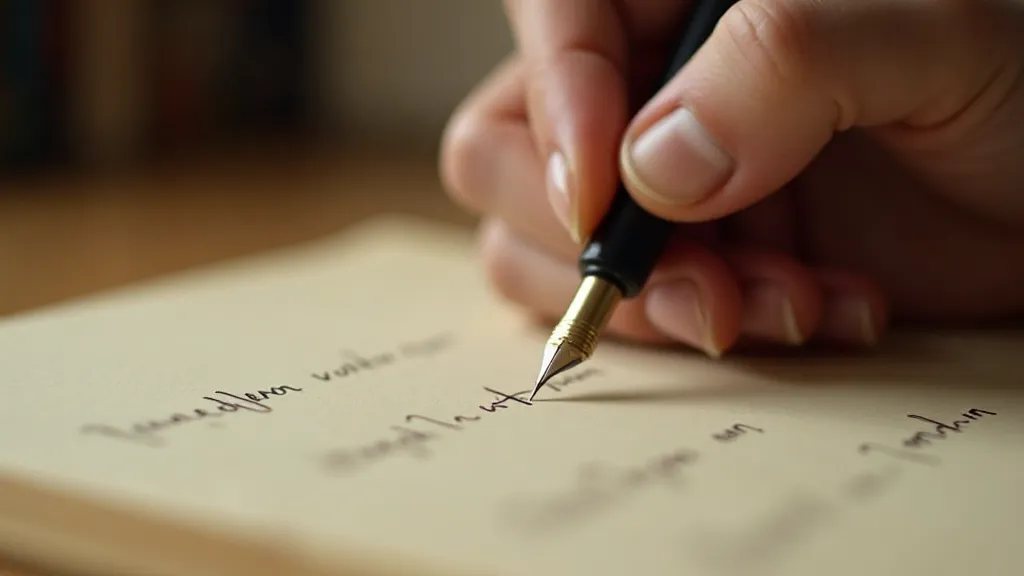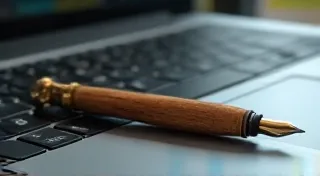The Script's Embrace: How Pens Shape the Writer’s Intimacy with Words
The clatter of a keyboard, the glow of a screen – these are the hallmarks of modern writing. But step back, just for a moment, to a time when writing was an act steeped in ritual, a deliberate dance between hand, nib, and page. A time when the instrument itself – the pen – wasn’t merely a tool, but a confidante, a partner in the unfolding of thought. For those of us drawn to antique pens, this isn’t simply a hobby; it’s a yearning to reconnect with a tactile intimacy lost in our increasingly digital world. The weight of a well-crafted pen in your hand, the subtle flex of a nib as ink flows onto the page – these are sensations that ignite a deeper connection to the written word, fostering introspection and sparking creativity in ways a keyboard simply cannot replicate.

More Than Just a Tool: A Legacy of Craftsmanship
Antique pens aren’t mass-produced novelties. They are the tangible remnants of a time when artisans took immense pride in their craft. Consider the intricate detailing of a Conway Stewart, the robust engineering of a Waterman, or the elegant lines of a Parker Duofold. Each pen is a testament to hours of painstaking labor, the result of a mastery passed down through generations. The materials themselves speak volumes: ebonite for the bodies, precious metals for the trims, carefully calibrated nibs designed to respond to the writer's touch with nuance and grace. To hold one is to hold a piece of history, a silent witness to countless stories, poems, and letters penned by those who came before.
I remember, as a young boy, finding a forgotten Parker 51 in my grandfather’s desk. He was a quiet man, a farmer, not one given to displays of sentimentality. Yet, this pen, this unassuming object, felt charged with a hidden narrative. He rarely spoke about his past, but holding that pen, feeling its worn smoothness, I felt a fleeting connection to him, a sense of shared experience transcending words. It was a powerful realization - a writing instrument can be a bridge across time, a vessel for unspoken emotions. The careful selection of materials and the dedication to detail weren't simply about creating a functional tool; they were about imbuing the object with a certain presence, a sense of enduring quality. It's fascinating to consider how the design choices reflected societal values and aspirations of the era – an area that some researchers have explored in fascinating detail, examining the materiality of status in vintage pen design.
Iconic Brands and Their Stories
Let’s delve into a few specific antique pen brands that have left an indelible mark on the world of writing. We’re not just talking about models, but the philosophies and the people behind them.
Waterman: The Parisian Pioneer
Waterman, hailing from France, was an early innovator in the fountain pen world. Founded in 27 Boulevard des Capucines in Paris, their pens were prized for their robust filling mechanisms and elegant designs. They were the choice of diplomats and writers seeking reliability and sophistication. The "Ideal" series, particularly, achieved widespread popularity. The brand’s commitment to quality and innovation cemented its place among the giants of the industry. What's fascinating is the sheer longevity of Waterman – still a respected brand, though significantly changed from its early days. Their commitment to design and functionality created instruments that were not merely tools, but statements of purpose and refinement.
Conway Stewart: British Elegance
Conway Stewart, a British firm, is arguably the most collected British pen brand. Their pens are highly sought-after by collectors due to the sheer variety of models and finishes produced over their long history. From the distinctive Marlborough to the grand Sterling models, Conway Stewart pens are known for their rich colours and intricate patterns. The company, unfortunately, faced financial difficulties, adding a layer of poignancy to the collecting experience – a reminder of the fragility of even the most established institutions. The historical record provides a rich tapestry of information about these pens, and many enthusiasts delight in uncovering the stories behind their creation – a journey sometimes likened to mapping pen designs through time and the untold stories they hold.
Parker: The Rise of the American Pen
George S. Parker's "Lucky Pencil" may have been a humble beginning, but it laid the foundation for a global empire. Parker’s focus on engineering and accessibility revolutionized the fountain pen market. The Parker Duofold, with its distinctive ribbed design, became a symbol of American style and innovation. The sheer volume of Parker pens produced means there are models to suit every budget and taste, making them accessible to both newcomers and seasoned collectors. Their ingenuity extended beyond design; Parker pioneered the button filler and the Aerometric ink filling system, innovations that shaped the industry. The nuances of early Parker inks and their chemical composition also provide a fascinating window into a bygone era. Those interested in the technical aspects of these tools may find the study of understanding the chemistry of vintage inks particularly rewarding.

Restoration and Collecting: A Labor of Love
Antique pens often bear the marks of time – scratches, cracks, and faded finishes. Restoration is a delicate process, requiring patience, skill, and a deep respect for the original craftsmanship. It’s not about making the pen look brand new, but about preserving its character, its history. Simple cleaning, nib polishing, and sac replacement can breathe new life into a tired pen, allowing it to write smoothly once more. More complex restoration, such as body repairs or repatination, is best left to experienced professionals. Beyond the technical aspects, restoration allows one to connect with the past, to appreciate the skill and artistry of the original maker, and to understand the passage of time etched into each object. The process of uncovering the story embedded within a worn pen, much like deciphering a historical document, can be incredibly enriching.
Collecting antique pens is more than just acquiring objects; it’s about embarking on a journey of discovery. Each pen tells a story – a story of its maker, its owner, and the times in which it was used. The thrill of the hunt, the satisfaction of finding a rare model, and the joy of connecting with history – these are the rewards of being a collector. The community surrounding antique pens is also incredibly welcoming, full of enthusiasts eager to share their knowledge and passion. Many collectors delve into the historical context of these pens, uncovering forgotten details and piecing together fragments of the past. This quest for understanding highlights the profound connection between material objects and the stories they represent.
The Enduring Power of the Written Word
In a world dominated by fleeting digital communication, the act of writing with an antique pen offers a tangible connection to the past, a moment of quiet contemplation, and a deeper appreciation for the written word. The slight flex of the nib, the flow of ink onto the page – these sensations remind us that writing is not just a process; it’s an experience. It’s a ritual. And as we hold these beautiful, historic pens in our hands, we become part of that enduring legacy – a chain of writers, connecting across time, bound together by the power of the script's embrace. This ritualistic connection, the deliberate slowing down required to write with a fountain pen, fosters a deeper level of focus and intention, something that is often lost in the rapid-fire exchanges of the digital age. The physicality of the pen and paper, the feel of the ink flowing from the nib, creates a sensory experience that is intrinsically linked to the act of creation.






